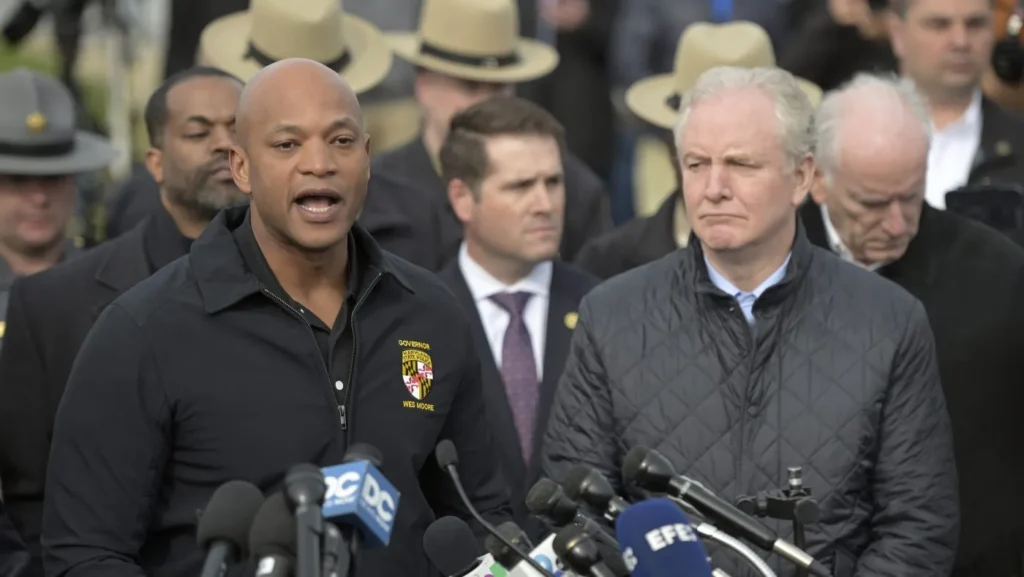In the wake of a devastating Francis Scott Key Bridge collapse in Maryland, Governor Wes Moore has issued a fervent plea to Congress, urging immediate action to allocate funds for the reconstruction efforts. The catastrophic event, which occurred March 26,2024 1:28 a.m. EDT (05:28 UTC)[1] has not only disrupted transportation networks but also raised critical safety concerns for communities relying on the bridge’s connectivity. Governor Wes Moore call for swift and substantial funding underscores the urgency of addressing infrastructure vulnerabilities to ensure public safety and economic stability.
Understanding the Impact of the Francis Scott Key Bridge Collapse
The collapse of the Francis Scott Key Bridge has reverberated across the state, causing widespread disruptions and highlighting the fragility of aging infrastructure. The bridge, a vital link in Maryland’s transportation network, served as a crucial artery for commuters, businesses, and emergency services. Its sudden failure has not only severed essential connections but also posed significant challenges for residents and local authorities.
The bridge spans the Patapsco River between Hawkins Point and Dundalk, Maryland; after the cargo ship Dali struck one of its piers, the main spans and the three nearest northeast approach spans fell way. Six people lost their lives in this tragic incident; two of their remains have been found, and the other four are thought to be dead.
Beyond personal sorrow, the closure of the waterway has resulted in estimated losses of $15 million per day, affecting over 8,000 jobsand interfering with the vital operations of the Port of Baltimore[2]. Constructed in steel, the bridge was 1.6 miles long and had an arch-shaped continuous truss structure made of steel. It opened in 1977 and served as a vital link between Interstate-695 (the Baltimore Beltway) and the busy port[3]. Let’s hoping for quick recovery and restoration in the face of this global crisis.
Economic Disruption and Losses
The closure of the bridge has resulted in significant economic disruption, impacting businesses that rely on efficient transportation routes for their operations. With alternate routes facing increased congestion and delays, supply chains have been disrupted, leading to delays in deliveries and increased costs. Small businesses, in particular, are feeling the brunt of the collapse, facing financial losses and uncertainty about their future viability.
| Impact | Details |
|---|---|
| Port Closure | The collapse obstructed the Patapsco River, affecting the Port of Baltimore. |
| Job Disruptions | Over 8,000 jobs associated with port activities are directly impacted. |
| Supply Chain Disruptions | The port’s closure affects manufacturers, dealerships, and consumers. |
| National Economy | The port’s operations contribute significantly to broader American economic growth. |
| Emergency Aid | The Biden administration allocated an initial emergency aid of $60 million. |
| Rebuilding Cost | The estimated cost of rebuilding the bridge is at least $2 billion. |
Safety Concerns and Public Welfare
Beyond the economic repercussions, the bridge collapse has raised serious safety concerns for residents and commuters. The sudden failure has prompted questions about the integrity of other aging infrastructure assets, highlighting the need for comprehensive inspections and maintenance protocols. Ensuring public safety must be a top priority, and swift action is needed to address vulnerabilities and prevent future tragedies.
Governor’s Urgent Plea to Congress

In response to the crisis, Governor Wes Moore has taken decisive action, calling upon Congress to allocate the necessary funding for the prompt reconstruction of the bridge. Recognizing the critical role of federal support in infrastructure projects of this magnitude, Governor Wes Moore has emphasized the importance of bipartisan cooperation in addressing the state’s infrastructure needs.
Importance of Federal Funding
Governor Wes Moore has underscored the significance of federal funding in facilitating timely and efficient reconstruction efforts. While state and local resources are essential, the scale of the project necessitates substantial support from the federal government. Investing in infrastructure not only addresses immediate needs but also stimulates economic growth, creates jobs, and enhances the resilience of communities.
Bipartisan Cooperation and Swift Action
Acknowledging the urgency of the situation, Governor Wes Moore has urged lawmakers to set aside partisan differences and prioritize the welfare of the affected communities. By working together to secure funding for the bridge rebuild, Congress can demonstrate its commitment to public safety and effective governance. Time is of the essence, and every moment counts in ensuring that residents can regain access to essential services and resume normalcy.
Path Forward: Rebuilding Stronger and Safer
As discussions unfold in Congress regarding the allocation of funding for the bridge reconstruction, stakeholders must prioritize resilience and innovation in the rebuilding process. The new bridge must not only restore connectivity but also incorporate modern design principles and engineering standards to withstand future challenges.
Embracing Sustainable Solutions
Incorporating sustainable practices and materials in the reconstruction efforts can yield long-term benefits for both the environment and the community. From utilizing recycled materials to implementing green infrastructure solutions, the project presents an opportunity to showcase Maryland’s commitment to sustainability and resilience.
Enhancing Connectivity and Accessibility
Beyond restoring the bridge to its previous functionality, efforts should be made to enhance connectivity and accessibility for all residents. Incorporating pedestrian and cycling infrastructure, as well as accessible public transportation options, can promote inclusivity and improve quality of life for communities surrounding the bridge.
The bridge collapse in Maryland serves as a stark reminder of the critical importance of investing in infrastructure resilience and safety. Governor Wes Moore‘s urgent plea to Congress underscores the need for swift and decisive action to allocate funding for the reconstruction efforts. By prioritizing public safety, economic stability, and innovation, stakeholders can work together to rebuild stronger, more resilient communities for generations to come.